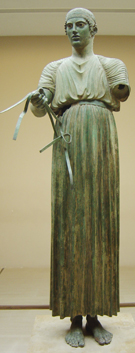August 27th, 2006 New York City
Rob Bettmann- Costas, I’ve been told that you were Balanchine’s favorite photographer. You were there for the creation, performance, and response to the majority of his work. You have documented the work of scores of companies, choreographers, and dancers. You have provided images for a number of books, not to mention your own book of Balanchine dance imagery. Would you be willing – for today – to cite a single experience as your favorite experience?
 Costas – You know, Balanchine’s Don Quixote with the Ballet Russe was not a great success. And it lasted for a few years and then they were going to bury it. And the last season they were doing it, just before they were doing it, he was saying something, and I wanted to hear the rest of what he was saying so I got in the elevator – I wanted to hear the rest of what he was saying – so I just followed him. We went upstairs to the fifth floor studio, and he started choreographing a pas de deux. And it was a pas de deux to the ballet Don Quixote. And I said to myself – he wasn’t satisfied with the one that existed– and I said to myself, ‘Here is a ballet that is going to die in a couple of weeks, because that was going to be the last time that they were going to do it. Ever. They had sold the scenery so that way they could be sure they were going to not do it. Why is he choreographing a new pas de deux for a ballet that is going to die? Dissapear? I was at a loss. I did not understand.
Costas – You know, Balanchine’s Don Quixote with the Ballet Russe was not a great success. And it lasted for a few years and then they were going to bury it. And the last season they were doing it, just before they were doing it, he was saying something, and I wanted to hear the rest of what he was saying so I got in the elevator – I wanted to hear the rest of what he was saying – so I just followed him. We went upstairs to the fifth floor studio, and he started choreographing a pas de deux. And it was a pas de deux to the ballet Don Quixote. And I said to myself – he wasn’t satisfied with the one that existed– and I said to myself, ‘Here is a ballet that is going to die in a couple of weeks, because that was going to be the last time that they were going to do it. Ever. They had sold the scenery so that way they could be sure they were going to not do it. Why is he choreographing a new pas de deux for a ballet that is going to die? Dissapear? I was at a loss. I did not understand.
A few years later, I was doing a book on Greek myths. “Gods, Masters, and Heroes.” And the writer and I were in Delphi. And there is the famous statue of The Charioteer. You know it. But this charioteer was in a chariot which no longer exists. The chariot has disintegrated. But the charioteer is holding his reins to the horse, and when you would see him in ancient times he was in his chariot, so you couldn’t really see his feet. Yet when you look at the statue now, everything was done perfectly. Achilles tendon, and everything. And I said to myself – well, those feet have never been seen by anybody at that time, because of the chariot. Why did the sculptor make it so perfect? And then I connected that with Balanchine and Don Quixote. Because everything had to be perfect, even if it was never going to be seen.

